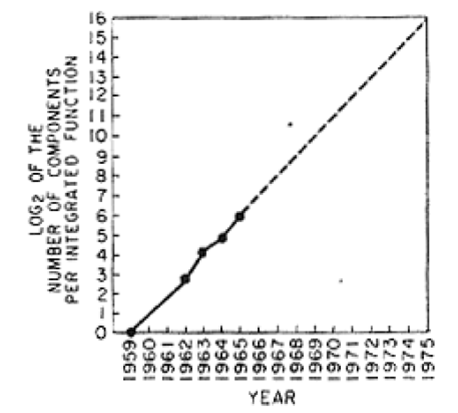Intelligent vehicles have been around for quite some time already. Researchers at Freie University in Berlin have been working on this since 2006 and recently exhibited a Volkswagen Passat driving and parking at the intended place without any driver. Google’s driverless car project has received a lot of attention and substantial investments are now being made not only by car manufacturers, but also truck companies such as Scania.
At such an early stage, it’s always difficult to assess whether a technology will remain as a niche product or gain widespread acceptance. Optimists point at the potential while pessimists happily explain the inherent weaknesses. Will driverless vehicles prevail or not? Below, I address some of the major skepticism related to this technology.
The technology can never fully replace the need for a human driver
Whether the technology will become clever enough or not is perhaps the greatest concern. The capability of a car to be self-regulating is ultimately related to the performance of hardware in terms of processors, sensors and communication technology and software in terms of sufficiently intelligent programming.
To understand the evolution of these technologies it is instructive to think in terms of Moore’s law. In 1965, Intel’s co-founder Gordon Moore stated that the amount of transistors on an integrated circuit will double in 18 months over the coming years. Moore’s original prediction:
Interestingly, this prediction has essentially remained accurate ever since. The graph below is thus a neat summary of what we now refer to as the information society (please note that the Y axis is logarithmic).
There is a sufficient amount of computing capacity in the world for each ant to own a small computer (a microprocessor). About 10000000000000000000 transistors are produced each year and these can store information by switching on and off 1,5 trillion times per second. If you’d press a light switch on and off 24/7 it would take you 25 000 years to reach 1,5 trillion. All this computing capacity as been absorbed by software, making these transistors increasingly intelligent and capable of performing more and more functions.
When marveling at historical forecasts it is striking to what extent those who have understood Moore’s law came up with more accurate predictions than those who didn’t.
IBM’s chairman Thomas Watson stated in 1943 that
“There is a world market for maybe five computers.”
As neither transistors nor integrated circuits had been invented back then this mistake is rather understandable. The following quotes, are, however, eloquent illustrations of what happens when you underestimate the explosive nature of digital technology:
“…we believe the penetration by digital cameras of the installed base will be moderate for the next 10 years.”
// An analyst at Smith Barney, 1997
“We are upgrading Polaroid to Outperform from Neutral based on the company’s new product performance…”
// Morgan Stanley, January 2000, less than two years before the Polaroid goes bankrupt
At the same time, those who understood the dynamics of digital technology have been able to make surprisingly accurate forecasts:
“There’s going to be some gizmo that kids carry around in their back pocket that has everything in it – including our books, if they want.”
// Michael Hart, 1998
History since the mid 1960s can be regarded as a continuous process where digital technology not only displaces other technologies, but also removes the need for human control and intellectual work. As hardware becomes cheaper and better while software makes all this technology progressively more intelligent at an exponential rate, electronics becomes increasingly capable of performing functions that were previously conducted by humans.
But is digital technology sufficiently reliable?
It would be strange if all those 10000000000000000000 transistors produced each year are only used for consumer gadgets that are not critical for the workings of complex systems. Electronics is, and becomes, more reliable every year and in fact, its original nursing market was largely related to applications where reliability was crucial. Another quote from Gordon Moore (1965) is enough to close this argument:
“Such programs as Apollo, for manned moon flight, have demonstrated the reliability of integrated electronics by showing that complete circuit functions are as free from failure as the best individual transistors.”
Current legislation does not allow for the emergence of driverless vehicles
This is true, in most settings. But things can change. In fact, they’re already changing.
The state of Nevada passed a law in 2011 that permits the operation of driverless cars. In May last year, the first license for a self-driven car was issued last year. California and Florida have also passed such laws while Michigan and New Jersey are currently working on it. While there are always special interests trying to block such changes, there are also companies benefiting from changing legislation. In this case, Google has played a key role in the process.
Gordon Moore’s colleague and co-founder, Robert Noyce (who also co-invented the integrated circuit), wrote in 1977:
“It has often been said that just as the industrial revolution enabled man to apply and control greater physical power than his muscle could provide, so electronics has extended his intellectual power.”
This quote provides a great summary of economic history over the last 300 years puts an interesting perspective on driverless vehicles. The industrial revolution created engines and technologies that made us capable of using physical power beyond our muscle, but the human brain was still needed to monitor the process. The next logical step is therefore that electronics will remove the need for human control. The question is therefore not if, but when and how.
Summing up, those who argue that driverless vehicles will never prevail for technological reasons may in the future be looked upon as the Thomas Watsons, Smith Barneys and JP Morgans of our time – they underestimated the dynamics of digital technology and therefore ended up making predictions that in retrospective look funny.
New technologies are frequently met with skepticism. Much of it is usually ill-founded.



Lämna ett svar